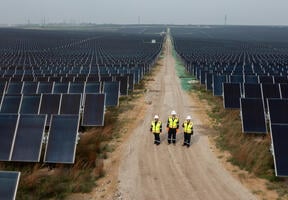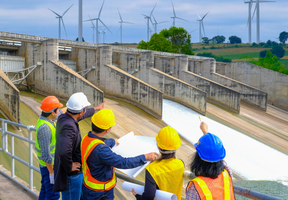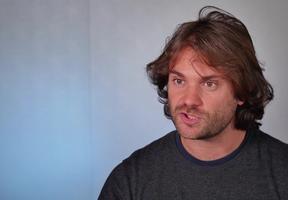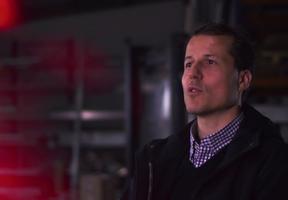Madagascar : A Difficult Energy Transition
10 min read
Madagascar, the fifth-largest island in the world,1 is located in the Indian Ocean a few hundred kilometers off the coast of Africa. Measuring more than 1,500 kilometers from north to south, it has a greater surface area than France and Belgium combined. In 2017, the country had a population of 25 million, growing by 2.7% per year (versus a global average of 1.2%).
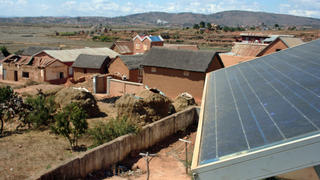
© GREGOIRE POURTIER / AFP - Réunion Island is leveraging its wealth of sunlight to develop photovoltaic solar power, even though its geography does not lend itself to large-scale parks.
Lying on the Tropic of Capricorn, Madagascar has an extremely varied climate, ranging from a tropical system complete with monsoons in the north-west to a virtual desert at the southern extremity, which is also the poorest part of the island.
Madagascar’s landscapes are a highly diverse mixture stretching from the coastal plains to the central highlands, which peak at between 1,000 and 1,500 meters and represent 70% of the country’s surface area. Because of this diversity, Madagascar is blessed with exceptional biological wealth. However, this is being threatened by deforestation as a result of slash-and-burn agriculture2 and the production of , an essential resource in the country’s vast rural areas. Even if this trend has been halted, Madagascar is a highly sought after destination for farmland among international investors, particularly from India and South Korea. Like most countries in Africa and Asia, Madagascar is also experiencing significant rural flight, which has led to a poorly managed expansion of its major cities.
Madagascar is one of the ten poorest countries in the world, with 80% of the population earning less than $2 per day. It is also one of the most threatened by . In 2015 and 2016, the country faced its worst drought in 35 years, mainly due to the El Niño phenomenon, which regularly causes famines. Madagascar is also regularly struck by extreme climate events, such as Cyclone Enawo in April 2017. Despite these handicaps, the country has a highly resilient economy, bolstered by international aid. Gross domestic product (GDP) has been growing for several years, and is expected to reach 4.7% in 2017, according to the World Bank.3
A Wood-Heavy Energy Mix
Around 80% of final consumption is provided by , mainly wood and charcoal, which is used for heating and cooking. Petroleum products, almost all of which are imported, account for 17% of the , and are mainly used in transportation. makes up just 2% of the mix.
The poor links between the ports and the highlands make distribution difficult. It takes seven hours to drive from the large Toamasina Port (also known by its French name Tamatave) to the capital city of Antananarivo in the island’s center. There is also the petroleum port of Antsiranana (also known as Diego-Suarez) in the island’s far north and Mahajanga Port (Majunga) on the west coast. The country’s main business activity, however, takes place on the highlands, with the capital alone consuming half of all hydrocarbons despite only representing 10% of the population.
The Challenge of Low Electrification
Madagascar has one of Sub-Saharan Africa’s lowest electrification rates. According to estimates by the World Bank, less than 20% of the population has access to electricity. The figure falls to 5% in rural areas, which are plunged into darkness as soon as the sun sets.
The country’s total generation capacity is estimated at less than 700 megawatts, scarcely greater than that of the small French island of Corsica. Two-thirds of electricity output is provided by around 12 aging and often poorly maintained hydroelectric dams, while the remainder is supplied by around 100 low-efficiency thermal power plants fired by . The quality of power distribution varies widely, relying on small, poorly connected local grids.
Development Projects
Under its 2015-2030 energy plan, the government of Madagascar intends to revive the hydropower industry, which theoretically has considerable potential, as well as build small solar power plants in rural areas, improve in homes and more effectively manage the power sector with the help of international experts.
The largest hydropower project is the Sahofika power plant located some 150 kilometers from the capital. Budgeted at €800 million, it would not be possible without the financial support of the World Bank. The plant will be built by a led by France’s Eiffage, with target capacity of 300 megawatts by 2020. In addition, German firm Siemens has signed a long-term memorandum of understanding to increase Madagascar’s power generation capacity by 300 megawatts by 2019, notably by installing small mobile gas turbines.
Madagascar boasts a great wealth of minerals, including nickel, cobalt, chrome, titanium and other heavy metals, but suffers from the low prices these commodities command on global markets. The island also has both and sedimentary basins that offer a favorable environment for oil and gas deposits. The government has planned tenders for some 40 offshore blocks but, as of end-2017, the difficult process of drawing up new mining legislation to encourage investment was still holding back development.
Sources:
- After Australia (the “island continent”), Greenland, New Guinea and Borneo.
- Slash-and-burn agriculture is a farming method that involves burning fields clear, briefly using them to grow crops and then letting them return to a fallow state.
- World Bank

